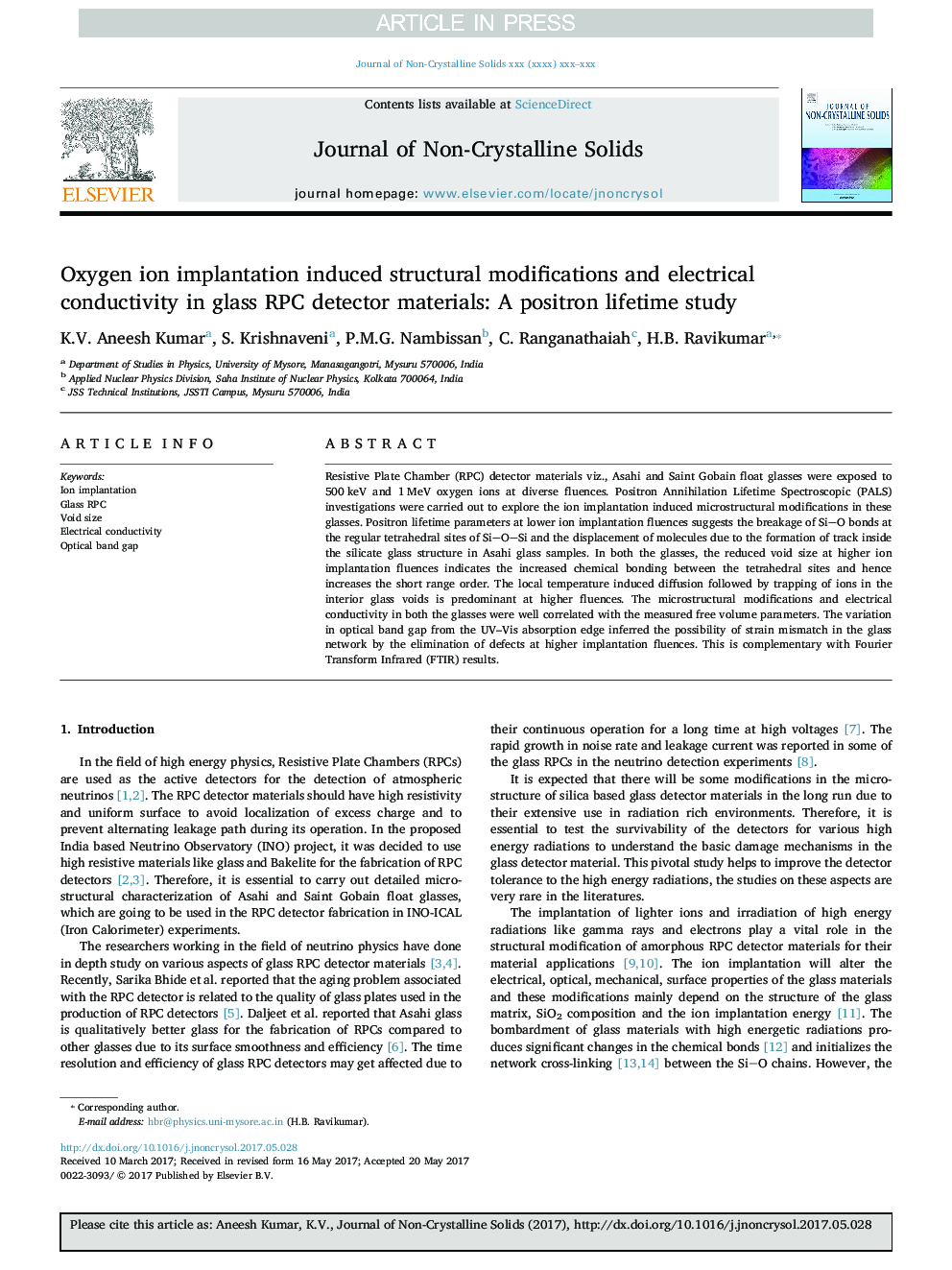| Article ID | Journal | Published Year | Pages | File Type |
|---|---|---|---|---|
| 5441073 | Journal of Non-Crystalline Solids | 2017 | 9 Pages |
Abstract
Resistive Plate Chamber (RPC) detector materials viz., Asahi and Saint Gobain float glasses were exposed to 500Â keV and 1Â MeV oxygen ions at diverse fluences. Positron Annihilation Lifetime Spectroscopic (PALS) investigations were carried out to explore the ion implantation induced microstructural modifications in these glasses. Positron lifetime parameters at lower ion implantation fluences suggests the breakage of SiO bonds at the regular tetrahedral sites of SiOSi and the displacement of molecules due to the formation of track inside the silicate glass structure in Asahi glass samples. In both the glasses, the reduced void size at higher ion implantation fluences indicates the increased chemical bonding between the tetrahedral sites and hence increases the short range order. The local temperature induced diffusion followed by trapping of ions in the interior glass voids is predominant at higher fluences. The microstructural modifications and electrical conductivity in both the glasses were well correlated with the measured free volume parameters. The variation in optical band gap from the UV-Vis absorption edge inferred the possibility of strain mismatch in the glass network by the elimination of defects at higher implantation fluences. This is complementary with Fourier Transform Infrared (FTIR) results.
Related Topics
Physical Sciences and Engineering
Materials Science
Ceramics and Composites
Authors
K.V. Aneesh Kumar, S. Krishnaveni, P.M.G. Nambissan, C. Ranganathaiah, H.B. Ravikumar,
